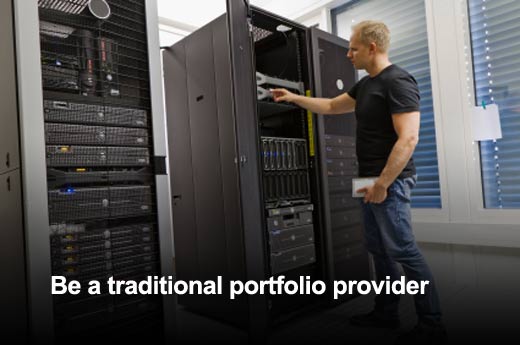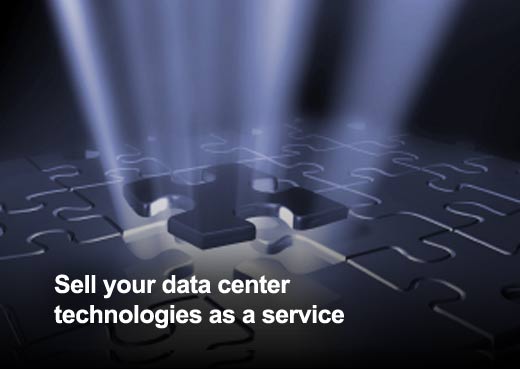IT managers are beginning to view the data center more holistically and are taking a more strategic approach to technology procurement and deployment, and technology and service providers that sell into the data center will want to broaden their marketing approach, according to Gartner, Inc.
"If you are selling into the data center, you are no longer just competing head-to-head with familiar competitors selling like products," said April Adams, research director at Gartner. "Today, you have increased competition not only in your specific area of technological expertise, but for overall enterprise mind share, as well. Providers will need to expand their view of the competitive landscape and consider alternative ways to go to market in order to highlight their strengths and maximize their sales potential."
Gartner has identified six ways that technology and service providers can go to market in the data center.
Click through for six ways technology and service providers can go to market in the data center, as identified by Gartner, Inc.
If a provider is competing as a specialist, it specializes in one technology area, and it doesn't try to be all things to all people. It doesn't go to market with converged systems or as a one-stop shot. Specialists want to be perceived as best-in-class in their technology area and covet a reputation as the provider with the most innovative or advanced technology. The primary advantage of this go-to-market option for strategic marketing, product marketing, product management, marketing communications and brand managers is that the approach is familiar. The primary downside is the changing market environment that introduces new competition. True specialists may well be better off trying to lead within their technology area than expanding into adjacent markets.
Portfolio providers are large providers that sell all or some of the various components that make up the data center infrastructure. In the traditional portfolio provider model, these technologies are developed in-house. The primary advantage of this go-to-market strategy lies in the provider's size. Most traditional portfolio providers are large enterprises, which means that they have the resources on hand to focus effectively on more than one technology area and produce successful, if not always groundbreaking, products in the areas deemed important to the customer's marketing strategy. Traditional portfolio providers should carefully monitor the market, and if there is any chance that they might move toward a converged offering, they should begin to explore how an integrated product might be deployed.
Partnering is an alternative way to get all the necessary data center infrastructure components into the provider's portfolio if it doesn't have offerings in every category in-house. This approach also enables providers to focus their resources on the things they do best and rely on partners for the rest. However, partnerships can be fickle, and sometimes they falter. Those taking the portfolio-by-partnership route should not underestimate the resources required to effectively manage and nurture these partnership relationships.
Some portfolio providers have taken a step beyond certification, integration and testing and have developed converged systems or integrated offerings for the data center. If the trend of approaching change in the data center with a definitive strategic plan that includes an integrated project road map continues into 2012, then going to market in this way could position providers as market leaders rather than market followers. Undertaking this strategy is a bold move. This approach represents a commitment to a new kind of data center and a new relationship between providers and customers. It requires significant investment and has the potential to take a long time to achieve a good return on investment (ROI).
Portfolio providers with a data center transformation (DCT) offering have the opportunity to sell both in the traditional, silo-based way and as a converged system or integrated stack. This strategy has all the benefits of both strategies and, with the exception of not being part of the holistic data center conversation, all of the disadvantages as well. Going to market both ways allows providers to cover all the bases no matter what buyers opt to do, both individually in the short term and collectively for the longer range.
The final go-to-market strategy alternative for the data center is to deliver the technology as a service — cloud or otherwise. There are several ways to achieve this:
- The customer owns the infrastructure, but the provider operates it (on-premises/off-premises)
- The provider owns the infrastructure, but the customer operates it (on-premises/off-premises).
- The provider owns and operates the infrastructure (on-premises/off-premises).
- Depending on the requirements of the customer, the service can be shared between entities or restricted.
Advantages to pursuing this go-to-market option, at least for technology (as opposed to service) providers, include the fact that there are several ways to go about it, some requiring less infrastructure investment than others. This alternative also allows providers to stick to their area of expertise while still tapping into the key wants and needs of data center customers. One critical decision faced by those who select this option is whether to transition existing customers to these models (and if so, how) or to pursue a dual strategy in which they sell both in the traditional way and as a service simultaneously.









